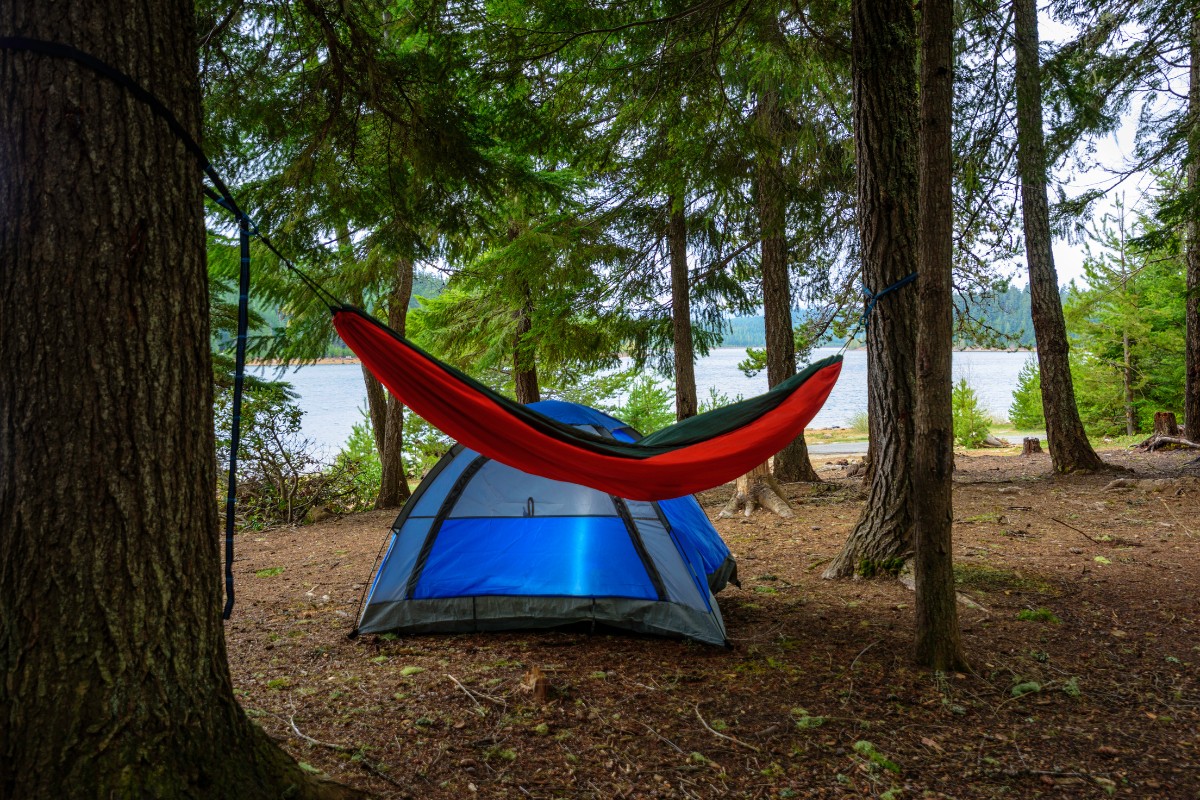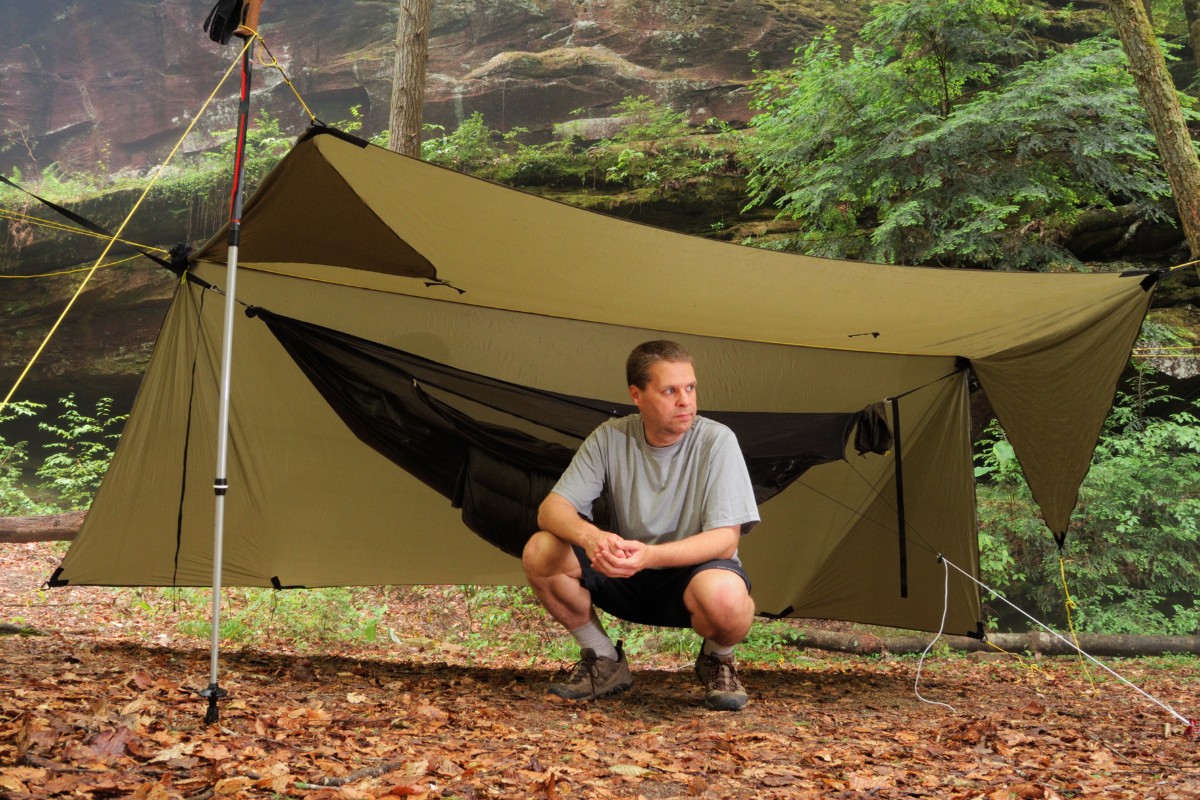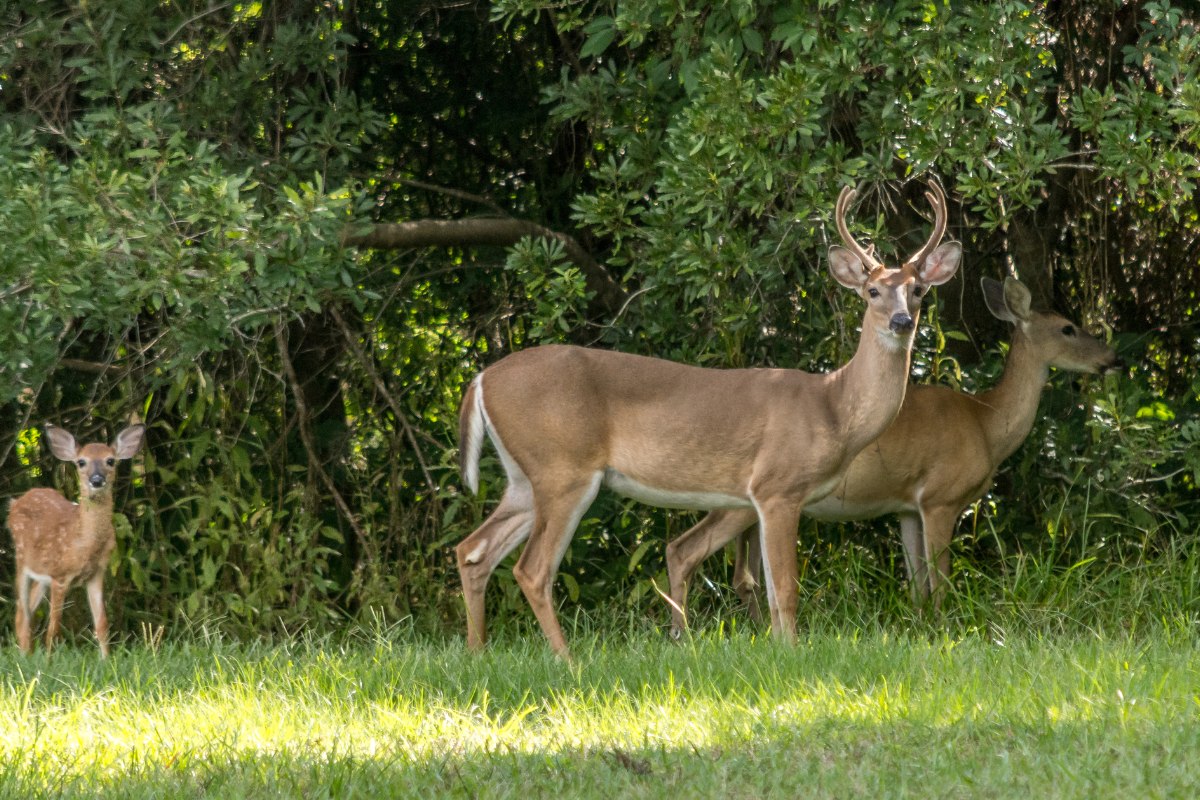When choosing a camping hammock, some vendors, especially cottage manufacturers like Hennessy, Warbonnet, and Dutchware, offer a single layer or double layer option. You might be confused about what they are, their differences, and which one you should choose.
We’ll thoroughly introduce every aspect of a hammock’s single and double layer, and the factors you should consider when making a choice between them.
What Are Single Layer and Double Layer Hammocks
Single layer, as its literal meaning, refers to a hammock that has only one layer of fabric. It’s the basic model for most hammocks. Single layer hammocks come in one-piece and three-piece fabric types. The former means the hammock is made of one complete piece of fabric, while the latter means the hammock is made of three pieces of fabric sewn together to form the body.
Double layer, or dual layer, refers to a hammock that has two layers of fabric sewn together. The gathered end style backpacking hammock usually has a 30-inch opening (some may not have) between the inside and outside fabric for placing a sleeping pad; bridge style hammocks, like the Warbonnet Ridgerunner, have the same width opening at both ends.
Single and double layers are both used for gathered and bridge hammocks. The biggest differences between layers are the total thickness of the fabric and whether they have slits for an insulation sleeping pad.
But do not confuse them with single size or double size hammocks; these are names that vendors use to refer to a hammock’s width.
Single or Double Layer: Which One Should I Choose
The factors you should consider when making a choice:
User Weight & Comfort Level
This is one of the two most important factors to consider (the other one is bottom insulation, which we’ll discuss below). Since they use different fabrics, single and double layer fabrics have different weight capacities.
Normally, single-layer hammocks use nylon or polyester, with thickness ranging from 20D/1.0 oz to 70D/1.9 oz, and weight limits ranging from 250 lbs to 400 lbs. Double layer hammocks usually use different fabrics for the two layers: a high denier outside layer fabric for resisting abrasion, and a low denier inside layer fabric for a soft touch. For example, the Warbonnet Lightweight Double Blackbird XLC uses 40D Nylon Outer and 20D Nylon Inner. Double layer hammocks usually have a 50-150 lbs larger weight capacity than single layer hammocks.
So, when choosing a hammock, weight capacity is the first thing you should consider, especially for heavier people. You might ask, if almost all hammocks’ weight limits are above my weight, should I choose any one I like?
The answer is: Yes, but not entirely.
You forget another thing: comfort level. Everyone wants to have a comfortable lay in the hammock, which refers to how flat you can lie in the hammock, and it is determined by the fabric’s stretch level—stronger fabric has less stretch. Double layer hammocks offer less stretch, a firmer lay, and less shoulder squeeze than single layer hammocks.
For example, a 250 lbs man can safely lie in a low denier (like 1.0 oz/20D or 1.1 oz/30D) single layer hammock, but the hammock will stretch a lot and have a deep sag, making him uncomfortable. However, if he chooses a high denier single layer (like 1.6 oz/40D or higher) or double layer hammock (even two 1.1 oz layers), he will get a firmer and flatter lay.
But it doesn’t mean only heavyweight people can choose double layer hammocks. Some people weighing less than 200 lbs also prefer dual-layer hammocks for a solid and flat lay. Everyone has different bodies and preferences; ultimately, single or double layer is up to you.
Bottom Insulation
Why Is Bottom Insulation Important in a Hammock
Underside warmth is critical when you sleep in a hammock, especially when the temperature is below 70°F or in a damp environment. Your body heat will be taken away with convective cooling, so insulating yourself against cold air is important for comfortable hammocking.
Generally, there are two ways to keep warm in the hammock: using an underquilt or a sleeping pad (closed-cell foam or inflatable air pad). An underquilt is suitable for both single and double layer hammocks, while a sleeping pad is more suitable for double layer hammocks as they have an internal sleeve between two layers to place the pad in.
So, how many layers of the hammock to choose depends largely on which insulation method you are going with.
Which Is Better, an Underquilt or a Sleeping Pad
Pros of underquilts:
- Comfortable and warm, especially a down underquilt, which has superb warmth and greatly improves comfort compared to a sleeping pad.
- The underquilt won’t move around in the hammock when you change position or enter it, making it a lot less hassle than using a sleeping pad.
- Doesn’t have condensation at the bottom when using an underquilt.
Cons of underquilts:
- Much more expensive than a sleeping pad; the price of an underquilt usually ranges from $100-$300. Although some synthetic underquilts are priced under $100, it’s still a significant investment.
- Takes more packing space and is heavier than a sleeping pad.
Pros of sleeping pads:
- Cheaper than underquilts; closed-cell foam or air pads cost dozens of dollars, making them economically friendly.
- Versatile use; can be used for ground sleeping if the environment doesn’t allow for hanging.
Cons of sleeping pads:
- Easy to slide out of place in a single-layer gathered end hammock; even in a double-layer hammock, it can still occur but is much better (In a double layer bridge hammock, it will almost not move anymore).
- Normal size sleeping pads, 20″-25″ in width, are a bit narrow for people with wider shoulders.
- Hammocks will have condensation when using a pad; the lower the temperature, the more condensation.
Compared with the pros and cons above, the underquilt is more suited for the advanced camper and can be used for single and double layer hammocks in both gathered end and bridge style. The sleeping pad is suitable for most normal-level campers and matches well with double-layer hammocks in both gathered end and bridge style.
How to Improve Sleeping Pad Experience in the Hammock
Although an underquilt is more effective and warmer than a sleeping pad, due to its price, the sleeping pad is still the first choice for many campers. Below are some tips for boosting the sleeping pad experience in a hammock:
- Apply some seam sealer or silicone dots on both sides of the pad to create friction and mitigate movement.
- Use a “Segmented Pad Extender” for closed-cell foam and inflated sleeping pads to effectively prevent sliding in a single layer hammock. You can DIY—use duct tape to attach the shoulder extender panel to your main pad, or buy one from manufacturers like ENO HotSpot Sleeping Pad Sleeve. You can also directly choose a sleeping pad with “wings,” like the Klymit Hammock V.
- If your shoulder feels cold with a 20″ narrow pad, use a wider one like 25″ or 30″ to avoid scooting off. Klymit Static V, Exped 9, or closed-cell foams are all good choices. The larger the pad, the more comfortable it will be.
- Don’t fully inflate the air pad; 3/4 of the air is good to go.
Mosquito Protection
If you often camp in summer, you must consider mosquito or other insect biting problems. A double layer hammock offers mosquito-proof protection, as mosquitoes are less likely to bite through the two layers. Also, equip your hammock with a bug net for top protection.
Furthermore, you could spray Permethrin over your hammock to repel insects, which is super useful for both single and double layer hammocks.
So, choosing a double layer hammock for camping in warmer and damp places is advisable, and it still allows airflow and is breathable in hot weather.
Durability & Abrasion
For a single layer hammock, if you accidentally cause a tear or snag the surface, you might end up sleeping on the ground. For a double layer hammock, the extra added layer is a relatively safe guarantee for such minor damage, helping you get through the trip until you return home. Besides, it is advisable to bring duct tape or other repair patches with you for temporary repairs.
A strong and durable double layer hammock can also alleviate abrasion and daily wear, extending its service years.
Package Weight
A single layer hammock often weighs around 6 ounces lighter than the same size double layer hammock. For a gram weenie, this should be a concern for your choice.
But for most campers, you won’t notice too much about the added weight when taking a double layer hammock, and the benefits of the extra layer may help you a lot on the trip.
Budget Concern
Of course, price is another important factor to consider when choosing a hammock, but I still list it last.
The price of a double layer hammock from cottage vendors is often $50 higher than a single layer one. It’s a significant amount to save if you choose a single layer hammock. It’s a tradeoff between the price gap and the double layer’s exclusive benefits; whether or not, it’s up to you.
Conclusion
From the above six main factors, you should now understand the main differences between single and double layer hammocks. When it comes to making a choice, considering more about your body weight, insulation method, and price, it should not be difficult anymore.
Enjoy your hammock camping!








